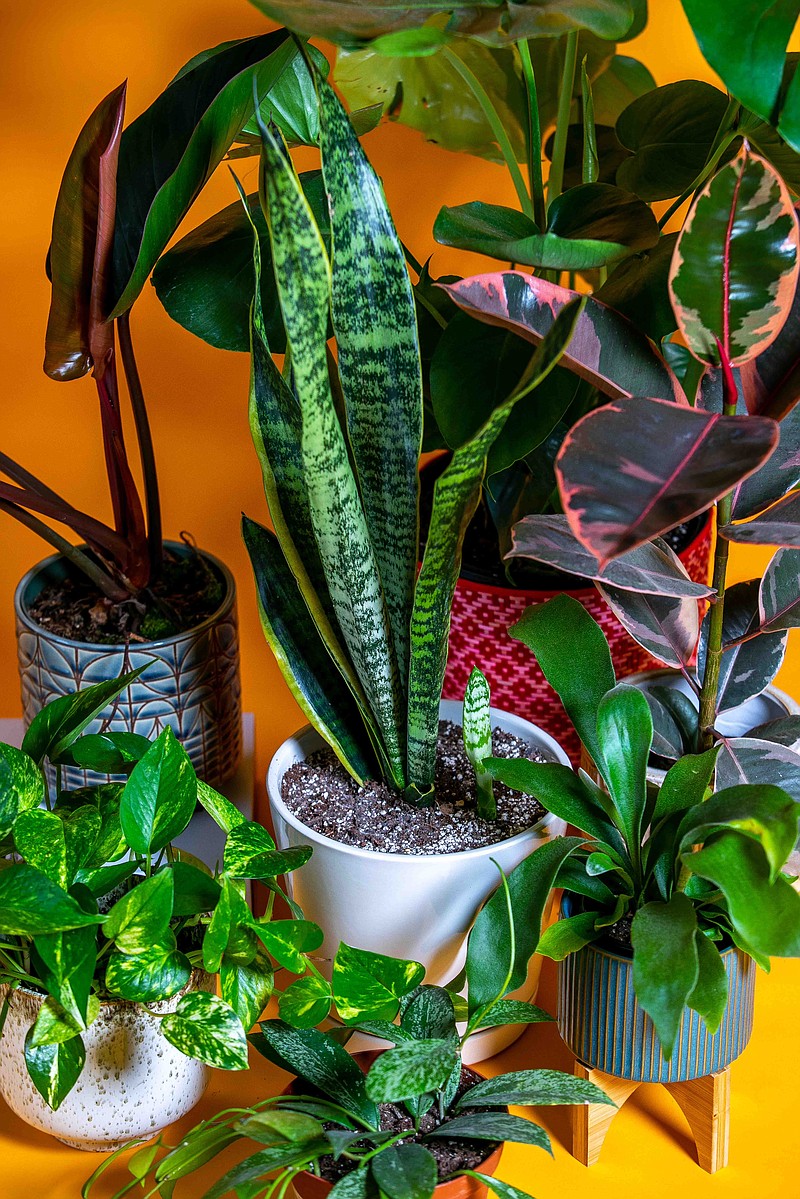With an abundance of natural light from skylights, balconies and windows, Christopher Griffin's Brooklyn apartment was asking for houseplants. So, the then-graduate student brought home a baby Marble Queen pothos. About six years later, the plant is approximately nine feet long and shares space with about 200 other plants in Griffin's cozy home.
Griffin, the social media star behind the Instagram account plantkween, often uses their platform to debunk the idea of the green thumb. "It's a green muscle. You learn over time," said Griffin.
Through their plant journey on Instagram, Griffin wants others to see not only how accessible and fun "plant parenting" is, but also how therapeutic bringing plants into the home can be. "Plants are a wonderful way to de-stress and decrease levels of anxiety," Griffin said.
Some of the biggest hang-ups people have with their houseplants include buying the wrong plants and tending to them incorrectly.
Through her Brooklyn-based company, Leaf and June, Lisa Muñoz curates plants for homes, offices, restaurants and other commercial spaces, picking the right plant that will both thrive and suit the style of the space.
We asked these experts to recommend their favorite low-maintenance houseplants and to offer tips for creating an indoor environment where the plants can flourish.
Rubber tree
"One of my go-to plants for anything and everyone is a rubber tree," Muñoz said. "They are super classic in appearance."
With thick, dark-green leaves, the rubber tree can grow into a tall, beautiful statement piece. The plant is relatively low-maintenance and requires medium to bright indirect sunlight. For the best results, let the plant's soil dry out almost completely between watering it.
Philodendron Congo Rojo
Long, dark leaves with burgundy undersides give this tropical-looking plant a distinct look. These types of philodendrons are easy to care for and can be forgiving if you're a little late on watering them. They drink a lot of water and prefer bright, indirect light. But Muñoz says they can withstand direct light, too; however, you'll need to adjust how often you water, because the soil will dry out faster.
Philodendron Brasil
The philodendron Brasil's heart-shaped leaves have bright, lime-green streaks and long, meandering tendrils, which make it ideal for hanging or placing on a shelf. "They cascade down very nicely," Muñoz said.
This philodendron does well in medium to bright indirect light, but it can acclimate to lower light conditions. Water when the first inch or two of soil becomes dry or if you notice limp foliage.
Snake plant
One of Muñoz's and Griffin's favorite houseplants is the snake plant. "It's structurally tall and narrow, which works if you don't have space and you want something a little more contained," Muñoz said.
Griffin loves the snake plant's unique leaf shape and air-purifying qualities; they have 25 of them in their Brooklyn apartment. The plant is versatile, tolerating an array of conditions, from low to bright light. Snake plants also are drought-tolerant, only needing water every two weeks in warmer months and three to four weeks in colder ones.
Hoya pubicalyx
"This variety of hoya is one of the easiest to take care of," Muñoz said. When happy, the glossy-leaved plant produces balls of miniature flowers, providing a burst of color and a fun textural element.
Place the hoya in medium to bright indirect light for the best results. Because they are drought-tolerant, let them dry out between waterings.
Pothos
In the wild, the pothos can grow along the forest floor and climb trees. In the house, it can be trained to climb a bookshelf, or you can let its leafy vines hang from a lofty perch.
For healthy growth, Griffin recommends placing the pothos in bright, filtered indirect light, avoiding harsh direct rays. "They can experience sunburn," Griffin warned.
For watering, it's best to test the moisture level of the soil by first poking your finger two inches deep. If it's moist, don't water. Water weekly during the summer and every two weeks in colder months.
Zamioculcas zamiifolia
"I've never had a ZZ plant die on me," Griffin said of the Zamioculcas zamiifolia, which requires bright, filtered light and not much water.
Griffin says caring for a ZZ plant is similar to caring for a snake plant. With bulbous roots that store water, this houseplant is drought-resistant. Before watering, let the soil dry out completely.
Monstera deliciosa
Commonly known as the "Swiss cheese plant" because of the unique cutouts in its broad leaves, the Monstera deliciosa can grow up trees in the wild.
As an epiphyte plant, the Monstera deliciosa gets its nutrients from the air and water in the rainforest. To mimic its natural habitat, Griffin recommends getting a moss pole to encourage the plant's aerial vines to climb in your home.
The tropical plant thrives in bright indirect light -- and sometimes an hour or two of direct light. The monstera enjoys humidity and having its aerial roots spritzed with water, Griffin said.

